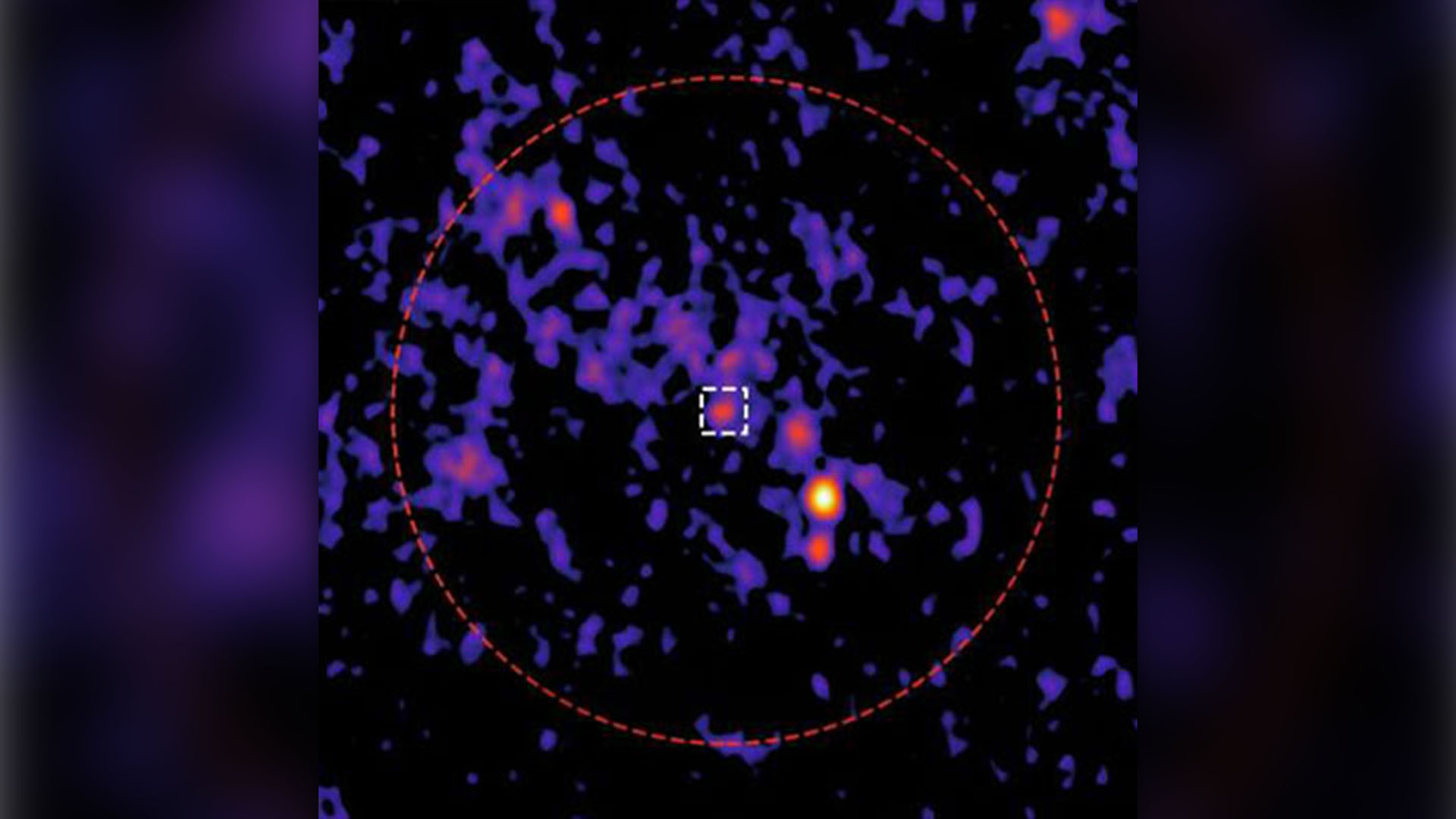
Astronomers have discovered a mysterious radio signal at the heart of an ancient, tightly packed ball of stars, and it may be coming from a long-hidden black hole.
The radio signal was picked up by the Australia Telescope Compact Array (ATCA) radio telescope as it created the most sensitive image of a globular cluster — a clump of ancient stars like these — ever taken. The ball of stars in question, named 47 Tucanae, is the second-brightest globular cluster in the sky over Earth and is located around 13,000 light-years from our planet.
"Globular clusters are very old, giant balls of stars that we see around the Milky Way. They're incredibly dense, with tens of thousands to millions of stars packed together in a sphere," team member Arash Bahramian, an astronomer at the Curtin University node of the International Centre for Radio Astronomy Research (ICRAR), said in a statement. "Our image is of 47 Tucanae, one of the most massive globular clusters in the galaxy. It has over a million stars and a very bright, very dense core."
The findings are detailed in a paper published Jan. 16 in The Astrophysical Journal.
Related: Turbulent 1st moments of a black hole's life captured in new simulations
What lurks at the heart of 47 Tucanae?
The 120-light-year-wide globular cluster 47 Tucanae, also known as NGC 104, was discovered by French astronomer Abbé Nicolas-Louis de Lacaille in the 1750s.
Since then, the globular cluster — which can be seen with the naked eye from Earth — has been well studied. However, these prior investigations failed to uncover the newly found radio source in the cluster's heart, which is estimated to host tens of thousands of tightly bound stars. The incredibly faint radio signal was revealed in data collected by ATCA over 450 hours of observation.
Team leader Alessandro Paduano, a scientist at ICRAR's Curtin University node, described the detection as an "exciting discovery" and explained that there are two possibilities for what is causing the radio signal.
The first is an intermediate-mass black hole, a black hole with a mass between 100 and 100,000 times that of the sun. These black holes have been more elusive than stellar-mass black holes, which have masses between five and 10 times that of the sun, and supermassive black holes, whose masses are millions or billions of times the sun's.
"While intermediate-mass black holes are thought to exist in globular clusters, there hasn't been a clear detection of one yet," Paduano said. "If this signal turns out to be a black hole, it would be a highly significant discovery and the first ever radio detection of one inside a cluster."
The second possibility is that the radio signal is the result of a pulsar, a rapidly spinning neutron star that blasts out beams of radiation that sweep through space like the light from a cosmic lighthouse.
"A pulsar this close to a cluster center is also a scientifically interesting discovery, as it could be used to search for a central black hole that is yet to be detected," Paduano said.
The new image gives astronomers an idea of the sort of science they can expect the SKA radio telescopes, which are currently under construction in Australia and South Africa, to deliver when they come online around 2027.
"Alessandro's research represents a culmination of years of research and technological advancements, and ATCA's ultra-deep image of 47 Tucanae represents just the beginning of the discoveries that are yet to come," study co-author Tim Galvin, an astronomer at Curtin University, said in the statement.
"We managed to achieve close to SKA-quality science with the current generation of radio telescopes, combining hundreds of hours of observations to reveal the faintest details," Bahramian added. "It gives us a glimpse of the exciting capabilities the next generation of radio telescopes will achieve when they come online."







